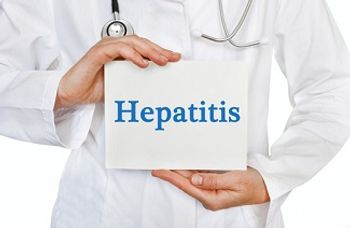
FDA Provides Insight on Deadly Multistate E coli Outbreak Linked with Romaine Lettuce
As the outbreak claims more lives, the FDA performs extensive traceback efforts to identify a primary source.
The Escherichia coli (E coli) outbreak linked with romaine lettuce has claimed more lives as it continues to beat down on the United States.
The good news, however, is that any immediate risk associated with it is gone, according to the US Food and Drug Administration (FDA), as any contaminated products are thought to have already worked through the food supply and are no longer available for consumption.
“This is a serious and tragic outbreak and we’re devoting considerable effort to identifying the primary source,” FDA Commissioner Scott Gottlieb, and Stephen Ostroff, MD, write in a recent
As of June 1, 2018, the Centers for Disease Control and Prevention (CDC) report 197 confirmed cases associated with the outbreak spanning 35 states. Forty-five percent (89) of these individuals have required hospitalization for their illnesses and 13% (26) went on to develop hemolytic uremic syndrome (HUS). Furthermore, 5 individuals have died.
“These statistics reflect the severity of this particular food-borne illness. The kidney damage that’s associated with HUS can require temporary dialysis and the kidneys may never fully recover,” Drs Gottlieb and Ostroff write. “For these reasons, anytime outbreaks caused by this pathogen occur, we need to find the root cause of the contamination and determine what went wrong. We need to relay these findings to industry so that measures can be put in place to prevent it from happening again.”
Health officials were able to identify 1 source for a cluster of illnesses involved in the outbreak, Harrison Farms. As mentioned in our
Now, officials have been working on performing extensive traceback efforts of the lettuce to identify points of convergence from multiple identified illness clusters with a common point of exposure.
“Traceback involves working backward from the point of consumption or purchase of the product through the supply chain,” they write. “It often includes investigating the multiple steps along the way.”
They add that the efforts are very labor-intensive and that they usually perform this for clusters of ill individuals occurring in different parts of the country. “When that point of convergence is identified, efforts can then focus on how the contamination occurred at that location,” they say.
Traceback activities have been performed for many of the illnesses associated with the outbreak, and in the most recent update, they share with the public traceback diagrams which shed some light on the situation, which is a particularly complicated one.
“There isn’t a simple or obvious explanation for how this outbreak occurred in the supply chain,” they share. “If the explanation was as simple as a single farm, or a single processor or distributor, we would have already figured that out.”
They do know, however, that contamination is unlikely to have happened towards the end of the supply chain as there are no common distributors among the places that received, sold, or served the contaminated lettuce. Therefore, they posit that the contamination may actually have occurred either at or close to the Yuma growing area.
Knowing this, officials are turning their efforts to investigating how lettuce grown on several farms within the same growing region could all become contaminated at the same time. They’re exploring the idea that it could be due to some kind of environmental contaminants such as irrigation water, air/dust, or animal encroachment. The other thought is that contamination may have happened right after the lettuce was distributed from the farm.
They’re up against 2 major complications that is making finding answers difficult: romaine lettuce is perishable with a shelf life of only a couple of weeks, and, as such, none of the contaminated lettuce that resulted in individuals’ illnesses is available for testing anymore; and harvesting season in the Yuma growing region was close to over by the time the outbreak sprung up, which makes it difficult to find where the harmful organism may have been hiding.
“The FDA is looking at all possibilities for how the contamination may have caused such a large outbreak. This work will continue…This includes working with farmers, technical experts, the lettuce processing industry, state partners, and others. It also includes on-site assessments,” they conclude. “Through such assessments, we may be able to find a possible explanation so that steps can be taken to prevent this problem from recurring.”
For the most recent case counts associated with the ongoing multistate E coli O157:H7 Romaine Lettuce Outbreak, be sure to check the
Newsletter
Stay ahead of emerging infectious disease threats with expert insights and breaking research. Subscribe now to get updates delivered straight to your inbox.

















































































































































































































































































